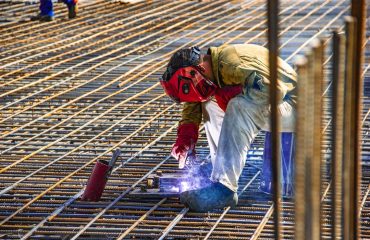body {
font-family: sans-serif;
line-height: 1.6;
}
h1, h2, h3 {
color: #333;
}
code {
background-color: #f0f0f0;
padding: 2px 4px;
border-radius: 4px;
}
Steel, a ubiquitous material in modern construction, boasts exceptional strength and versatility. However, designing safe and efficient steel structures requires a thorough understanding of strength calculations. This comprehensive guide delves into the intricacies of these calculations, exploring various methods, factors, and considerations to ensure structural integrity.
1. Understanding Stress and Strain in Steel
Before diving into specific calculations, it’s crucial to grasp the fundamental concepts of stress and strain. Stress (σ) is the force (F) applied per unit area (A): σ = F/A. It’s measured in Pascals (Pa) or megapascals (MPa). Strain (ε) represents the deformation of a material under stress, expressed as the change in length (ΔL) divided by the original length (L): ε = ΔL/L. Strain is dimensionless.
Steel’s behavior under stress is generally elastic within its yield strength. Beyond this point, it enters the plastic region, exhibiting permanent deformation. Understanding this relationship is vital for ensuring the structure remains within its elastic limit and avoids catastrophic failure.
2. Material Properties and Allowable Stress
Accurate strength calculations depend heavily on the material properties of the steel used. Key properties include yield strength (fy), ultimate tensile strength (fu), and modulus of elasticity (E). These values are determined through standardized testing and are specified in material datasheets. The yield strength represents the stress at which the material begins to deform plastically. The ultimate tensile strength is the maximum stress the material can withstand before failure. The modulus of elasticity describes the material’s stiffness.
Allowable stress (fa) is a crucial design parameter. It’s a fraction of the yield strength, incorporating safety factors to account for uncertainties in material properties, loading conditions, and fabrication imperfections. The safety factor is determined by relevant building codes and standards (e.g., AISC, Eurocode).
3. Common Steel Member Design: Beams and Columns
Steel structures primarily utilize beams and columns. Beam design focuses on bending stress and shear stress. Bending stress (σb) is calculated using the bending moment (M), the section modulus (S), and the distance from the neutral axis: σb = M/S. Shear stress (τ) is calculated using the shear force (V) and the shear area (Av): τ = V/Av.
Column design considers compressive stress and buckling. Euler’s formula is used for slender columns to determine the critical buckling load. For shorter columns, more complex methods accounting for material yielding are employed. Interaction equations are often used to account for combined bending and axial loads.
4. Connection Design: Ensuring Structural Integrity
Connections are critical for transferring loads between different steel members. The strength of a connection must be equal to or greater than the strength of the connected members to avoid failure at the connection point. Common connection types include bolted connections, welded connections, and riveted connections. Each type has its own design considerations and strength calculation methods. Bolted connections require checking for shear, bearing, and tensile stresses in the bolts and connected plates. Welded connections need analysis of weld strength based on weld size and type.
Proper detailing of connections is paramount to ensure efficient load transfer and prevent premature failure. Factors such as bolt spacing, edge distance, and weld size significantly affect connection strength.
5. Advanced Considerations: Fatigue, Stability, and Seismic Design
Beyond basic strength calculations, advanced considerations are crucial for ensuring the long-term performance and safety of steel structures. Fatigue analysis accounts for the effects of repeated loading cycles, which can lead to crack initiation and propagation. Stability analysis addresses the potential for overall structural instability, such as buckling or lateral-torsional buckling of beams and columns. Seismic design ensures the structure can withstand earthquake forces, requiring consideration of dynamic loading and ductility.
Software tools such as finite element analysis (FEA) are often utilized for complex structural analysis, providing detailed stress and deformation information throughout the structure. These tools are particularly valuable for intricate geometries or unusual loading conditions.
Understanding strength calculations in steel structures is fundamental to safe and efficient design. While this guide provides an overview, consulting relevant building codes, standards, and experienced structural engineers is crucial for real-world applications. Proper design and analysis ensure the longevity and safety of steel structures, maximizing their strength and versatility.
SEO Tags:
- Steel structure calculations
- Steel strength design
- Structural steel design
- Steel beam calculations
- Steel column design




